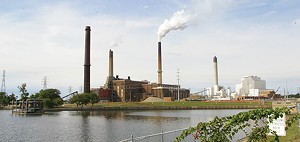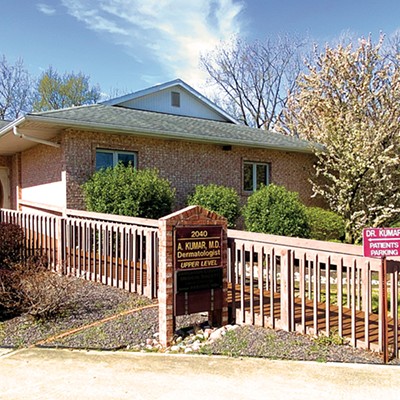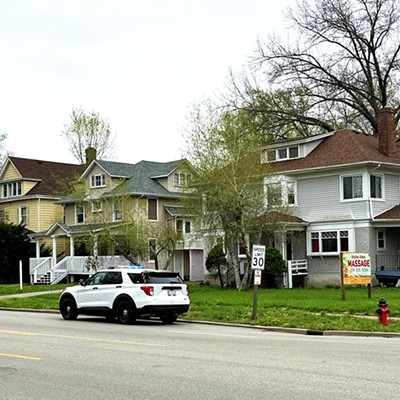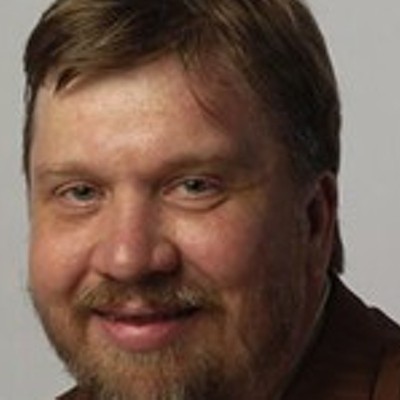All but one of the City Water, Light, and Power coal-fired electric generators have been shut down. According to the CWLP website, it generates 200 MW of electricity. The utility will be partnering with the University of Illinois to conduct testing of carbon capture technology. Other research projects associated with coal-generated electricity are also in the works. It would appear that the city intends to remain in the business of generating electricity. But has there been any consideration of expanding electric generation with the development of a renewable energy facility?
I recently read an article in the July 15 State Journal-Register that the Springfield Airport Authority broke ground to install a $5.6 million solar panel project. The article stated that the project, "will save over $500,000 annually in energy costs, with an estimated $14.1 million saved over the 30-year life of the array, officials estimated."
Mayor Jim Langfelder was one of the local officials present at the groundbreaking ceremony praising the project. "With solar, it supplants what we (CWLP) do," Langfelder said. "When we talk about the potential for rolling blackouts, this partners with our generation as optimally as you possibly can be because (when) the sun's out during the day – it doesn't matter how cloudy it is, doesn't matter if it's winter – it still generates some portion of electricity."
He said the project could show Springfield as a place moving toward sustainability.
"It's a lot of hard work by many entities coming to fruition," Langfelder said. "When businesses look to where they want to relocate or be part of Capital Airport, what they look at is sustainability. Are you reducing your carbon footprint? This says for an airport, 'Yes, we are.'''
So, if generating solar power at our airport is a good thing and the mayor and other local leaders think the project is good for Springfield, why don't we replace our coal-fired power plant with wind and solar power? In fact, CWLP already has a small solar power facility on the city's west side. CWLP customers can sign up to receive solar-generated electricity through the mySolar Program.
To generate enough power to either provide all or a substantial portion of the city's electrical needs, a much larger facility would have to be built. With the closure of all but one coal-fired generator, the demand for water from Lake Springfield has been drastically reduced. The city has purchased over 7,000 acres of land to develop Hunter Lake as a secondary source of water. Hunter Lake, or Lake 2, has still not been approved by the Army Corps of Engineers. When the Corps was not convinced the city needed a second lake to supply water to the area, the city shifted the focus of its request from a water source to a recreational need. The city's application is still pending.
By closing the current coal-fired power plant, the city's water needs have been reduced by tens of thousands of gallons per day. Why not table the application to build a second lake and develop the land the city purchased into a solar and wind energy facility? We already have a lake that offers recreational opportunities. Reopening the public beach would enhance the public's access to the lake. Other public access recreational resources could be developed. If down the road, there is a need to increase our water capacity, we can do what Decatur did and invest in dredging our existing lake. The Decatur dredging project increased their lake's capacity by 30 percent.
Developing a solar and wind energy facility would allow the city to stay in the business of producing electricity, which would be a source of revenue and a savings of energy costs. It would also give CWLP the opportunity to offer job retention to employees whose jobs may be eliminated with the closure of its coal-fired power plant.
CWLP already has an electrical distribution infrastructure that could be upgraded and connected to the solar and wind energy facility to provide clean energy to the city and sold over the regional power grid system.
Lake 2 is no longer needed. A local source of clean energy that would save the city residents money and be a source of revenue is a much better use of the land that has sat dormant for years. Let's develop a renewable energy power plant and focus on making our current lake cleaner and more accessible for recreational use by the public.
Bill LaMarca of Springfield is an attorney in private practice. He is a member of the Sierra Club and The Nature Conservancy.



















